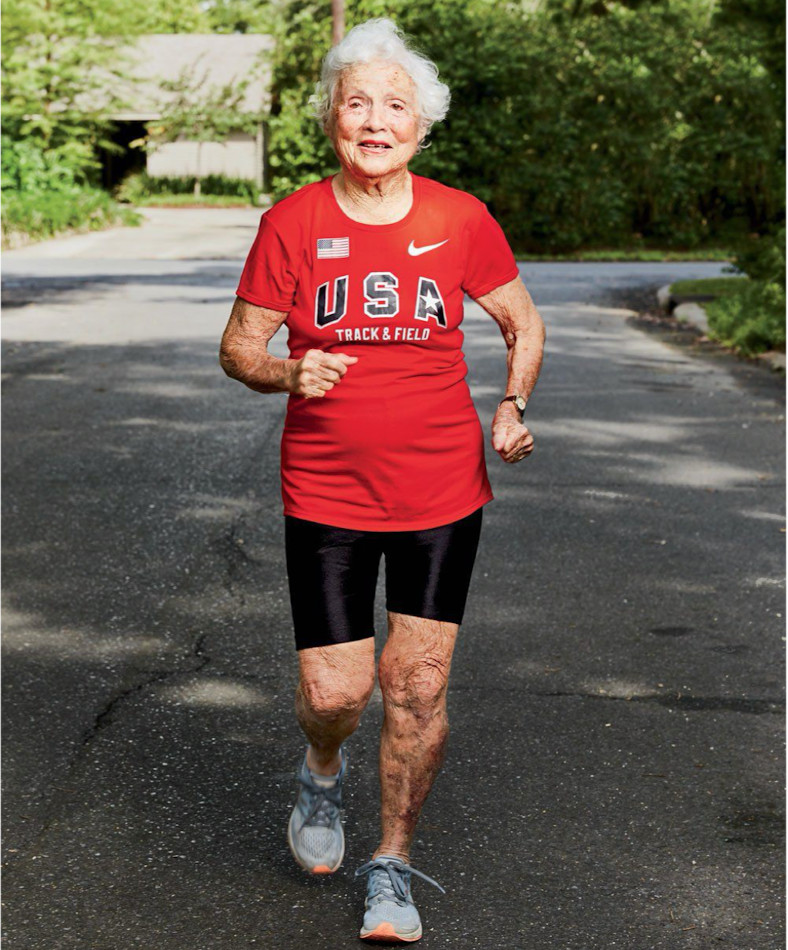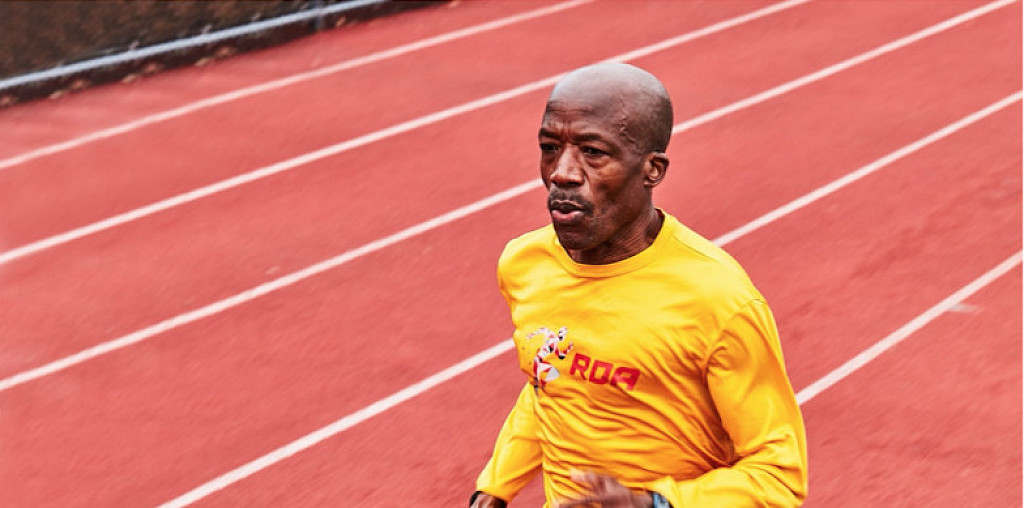Running News Daily
Running News Daily is edited by Bob Anderson. Send your news items to bob@mybestruns.com Advertising opportunities available. Train the Kenyan Way at KATA Kenya and Portugal owned and operated by Bob Anderson. Be sure to catch our movie A Long Run the movie KATA Running Camps and KATA Potato Farms - 31 now open in Kenya! https://kata.ke/
Index to Daily Posts · Sign Up For Updates · Run The World Feed
Running Stronger and Faster In your 40s and Beyond
Running strong past your 30s takes dedication. As you age, your body faces new challenges, and new roles and responsibilities enter your life that affect where, when, and how long you can run. We talked to nine runners about the day-to-day physical and logistical challenges of running in your 40s, 50s, 60s, 70s, and older to steal their tips for staying fast (and in some cases, becoming faster than ever!).
Then, experts weigh in on each runner's habits to talk about how you can apply their strategies to your running life. Plus, how to fuel your runs in each age bracket.

If you take care of your body, you can compete for a long time. I made my last Olympic team when I was 36 years old. But you have to adapt as you age. When you’re a young athlete, you’re still developing. You’re pushing to get stronger and faster. But once you’ve built the athleticism you need for your sport [and reached your ceiling], you don’t have to train the same, because you hit a rate of diminishing returns. Injuries come from pushing to get better and not being able to recover.
I still train six days a week, because it’s how I get my thinking in, but if I go hard two days in a row, I’m risking injury. I follow every high- intensity day with two low-intensity days, even if I feel great. On low-intensity days, I drop my effort to 70 percent. After a hard 10-mile tempo run, I’ll do 7 miles the next day, or run at 70 percent of my previous pace. When I do strength work, I use lighter weights or perform fewer reps, and I prioritize more rest between sets. I always stretch after workouts, and on off days, I’ll soak in hot water with Epsom salt, take vitamin D, and even go get a massage. To make sure I get enough protein, I take collagen, eat boiled eggs, and supplement with whey protein shakes.
The Experts Say: Reduce intensity and emphasize protein in your 40s to maintain muscle strength and cardiovascular endurance. By the time men hit age 40, strength and cardio start to drop by a percent or two per year, according to a study in Sports Medicine. Training smarter instead of harder—that means prioritizing recovery—helps you maintain performance, says Dr. Michael Fredericson, director of sports medicine at the Stanford University School of Medicine. He advises runners to do only two or three high-intensity runs a week. Research from the Netherlands suggests that eating 40 grams of protein after a training session can restore muscle faster than if you’d skimped on the protein, and research from Spain shows that adequate vitamin D is associated with improved performance and lower risk of injury. —As Told To Michael Easter
Reach for Your Peak
The Experts Say: Hormonal changes can diminish muscle and power in your 40s, so prioritize strength over endurance. “As estrogen and progesterone fluctuate and decline [during menopause], runners can experience muscle loss, loss of power, hot flashes, increased stress, and inflammation,” says female-performance physiologist Stacy Sims, Ph.D. Less estrogen makes it difficult for women to rebuild muscle, so consume more protein—0.7 grams per pound of bodyweight daily. Women also lose bone density with age, so supplementing magnesium, vitamin K2, calcium, and vitamin D3 can help you maintain a strong skeleton, per a 2020 study in Maturitas. —As Told To Emily Shiffer, With Additional Reporting By Selene Yeager
Find More to Love In Every Mile Amid a loss of muscle mass and testosterone levels, focus on movement quality, correct imbalances, and start experimenting, says Peter Park, C.S.C.S., three-time winner of the World’s Toughest Triathlon. Planks, squats, deadlifts, push-ups, and pull-ups with good technique can help you keep a balanced running form. Don’t neglect calf raises—Achilles issues are common among men in their 50s.
Park adds that racers in their 50s should quit worrying about PRs and enjoy the ride. “Put away heart monitors, pace charts, and goals. If you feel good, go faster. If not, go slower. Focus on your breath and the experience, and let running become your meditation.” —As Told To M.E.
Mobilize to Add Power Build mobility to stay elastic and prevent injury, says Jordan Metzl, M.D., sports medicine doctor at New York City’s Hospital for Special Surgery. “Muscles and connective tissues lose elasticity, which shortens your stride. People who only run tend to develop injuries as they get tight and lose strength. Building strength and mobility through your entire kinetic chain—all of the muscles, ligaments, tendons, and bones running the length of your body—is extremely important,” he says. That’s especially true for women, because they start with less muscle than men. Managing stress is important, too, because lower levels of estrogen can result in increased anxiety. While strength training helps with that, supplement your workouts with lots of sleep: Most experts agree six hours is the absolute minimum. —As Told To Selene Yeager
Feed Your Muscles to Stoke Your Speed Maintain stride length by working your glutes and hamstrings. Marathoners in their 60s had stride lengths 16 percent shorter than those of marathoners in their 40s, per a 2006 study from the British Journal of Sports Medicine. Hills can help older runners build leg strength and speed to keep strides long, says Greg McMillan, running coach and exercise physiologist. But approach hills carefully. McMillan suggests you have a consistent, strong running base, with strides at least twice per week, before you try hills. Start with shorter hills at a slow pace and build up gradually.
McMillan adds that men and women in this age group might experience noticeable weight gain. You lose muscle tissue as you age, which slows your metabolism and contributes to a higher percentage of body fat. A high-protein diet helps preserve lean muscle mass, and dietitian Leslie Bonci says runners in their 60s need at least 20 grams per meal, but should aim for 0.6 to 0.8 grams of protein for each pound of bodyweight daily. (For a 140-pound person, that’s 84 to 112 grams.) Bonci says calcium, vitamin D, and vitamin K are critical for bone health in this age group as well, plus dietary fiber—women over 50 should aim for 20 grams per day, and men should aim for 30. —As Told To Sarah Lorge Butler
Seek Running Adventures In your 60s, diversify where, when, and why you run. “Success in the 60s means reframing goals,” says Cathy Utzschneider, Ed.D., professor of high performance at Boston College. Adopt a “less is better” approach to training, and use your imagination to keep things fresh. You can use your running fitness to succeed in another sport: cycling, swimming, or even something like paddle tennis. Tony Coffey, coach of San Francisco’s Impala Racing Team, encourages cross country for his runners in their 60s because every course is different. And when you race in your 60s, Utzschneider recommends using an age-grading calculator, like the one on Mastersathletics, to score your performance on a curve. It’ll keep you competitive and be fair to your age. —As Told To S.L.B.
Embrace Leadership Prioritize balance and share your experiences with younger runners. “A comprehensive strength-training program should include balance work [in your 70s],” says McMillan. Do functional training, such as single-leg exercises, hamstring curls on a stability ball, and yoga. If you don’t have a strength routine at this age, just practice standing on one foot, then the other, for 10 seconds at a time.
Runners in their 70s should take advantage of their experience, says Utzschneider. “The brain is the biggest asset of the 70-something runner,” she adds. “Our brains help us be selective about what’s most important. Maybe it’s helping someone else get faster, whether you’re a coach or a training partner.” —As Told To S.L.B.
Outsmart Injury Use speed workouts to stay fit and competitive, says Coffey. Running at varied paces will strengthen your running economy—the energy you need to run at a given pace, adds McMillan. That can help offset the gradual decrease in max heart rate—about a beat every year—that begins sometime after age 30.
But also integrate low-impact cross training that elevates your heart rate on easy days, says Coffey, such as cycling, swimming, or even walking, to lower your injury risk. —As Told To S.L.B.
FUELING YOUR RUNS THROUGH THE DECADES
Your body’s needs evolve as you age. These nutrition strategies will more efficiently fuel your runs, and maintain muscle mass to preserve strength and metabolism.
In Your 40s...
Stop running on an empty stomach. High-carb, low-fiber foods like bananas, toast, and yogurt before a run will boost your glucose uptake and enhance performance. Make hydration a habit. Thirst response declines with age. Drink half your body weight in fluid ounces per day, plus an additional 12 to 24 ounces per hour of exercise.
In Your 50s...
Bookend runs with protein. 8 to 10 grams before a run and 30 to 40 after a run is ideal. An egg, a serving of tofu, or a cup of Greek yogurt will do it prerun, while a two-egg scramble with black beans and turkey after your run will promote recovery.
In Your 60s...
Carbs, carbs, carbs! Within 30 minutes after a run, fast-absorbing carbs help restore your glycogen, promoting better subsequent workouts. Sweet potatoes and brown rice work, but why not have some pancakes or waffles? (Three 4-inch pancakes provide about 60 grams of carbs.)
In Your 70s and Beyond...
Fuel with a meal. Eating something balanced 90 to 120 minutes before you run will boost immune function and decrease inflammation. Try a turkey sandwich with avocado on whole grain bread. Have a bedtime snack! Studies show that eating foods containing slow-digesting casein protein increases metabolic rate. Dairy is rich in casein.
by Runner’s World
Login to leave a comment




